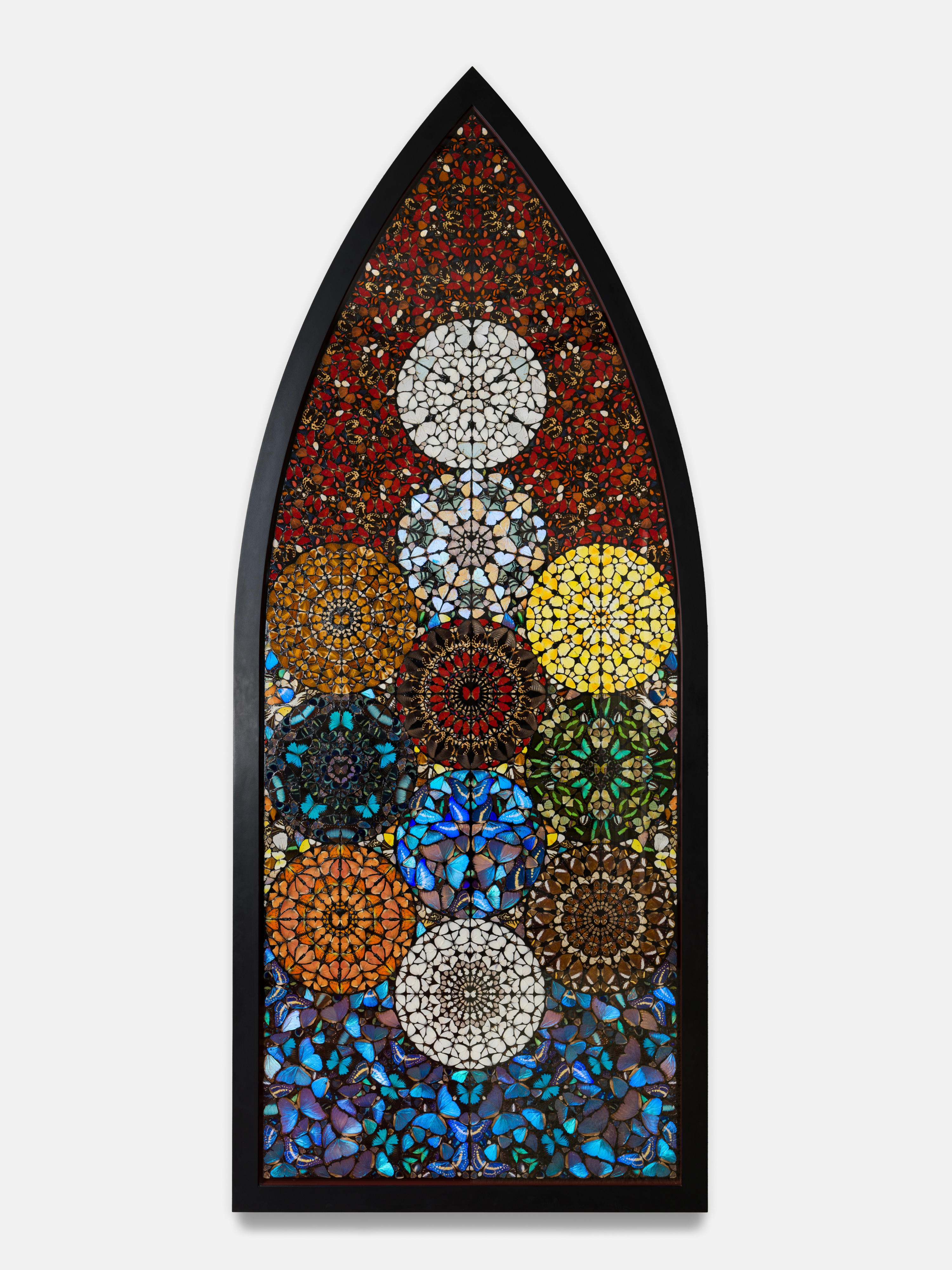Damien Hirst
Tree of Life
2007
Butterflies and household gloss on canvas
335.3 x 139.7 cm (132 x 55 in.)
Provenance
Anyway Art Inc., Los Angeles, 2018.
Description
The British artist Damien Hirst was born in Bristol in 1965, but grew up in Leeds. He was raised in the Catholic faith, attending a primary school run by nuns—an upbringing which would go on to influence his work. In 1984, after having struggled with academics, Hirst moved to London and began working in construction. In 1986, upon his second application, he was accepted into Goldsmiths College of Art at the University of London, where he would go on to obtain a Bachelors of Fine Arts.
While still a student, Hirst staged an exhibition alongside his peers in 1988. Entitled Freeze, the exhibition included works from a number of artists that would later form the Young British Artists (YBA) group, including Mat Collishaw, Sarah Lucas, and Michael Landy. His works at Freeze included repurposed materials—something that he would continue to do in future works.
Many of Hirst’s works explore uncertain aspects of the human experience, focusing on themes of mortality and religion. His use of animal carcasses suspended in formaldehyde, dead insects, casts of skulls, and other morbid materials, has provoked much controversy.
At a cursory glance, Tree of Life, 2008, looks like a stained glass window, similar to what one might find in a gothic church. Shaped like a lancet arch, the work contains several rosette-like patterns rendered in vibrant and iridescent colors. However, upon closer inspection, the work is not stained glass but rather hundreds of butterfly wings, meticulously arranged. The unique colorings and markings of each wing are transformed into a cohesive geometrical arrangement, making one marvel at their uniformity as well as their uniqueness.
Tree of Life sits at the intersection of life, death, and religion, encapsulating the themes Hirst frequently explores. The butterflies, often regarded as transformative insects, are frozen in time, perhaps as a nod to the finality of death and, subsequently, the inability to comprehend that finality. Preserving the butterflies simultaneously subverts and reinforces this finality, preventing their decay while displaying their lifelessness, placing the viewer into a state of both confrontation and denial. The result is beautiful and uncomfortable, playing upon the dissonance between perpetuity and mortality while provoking one to consider the factors of spirituality and religion.
Hirst’s works provoke one to wrestle with life and death—the dichotomy of the uncertain and the unavoidable. The present work is no exception: through the contrasting macabre nature of the medium and the ethereal form of the work with its spiritual connotations, Tree of Life elicits an underlying feeling of unease and an overwhelming sense of awe.


